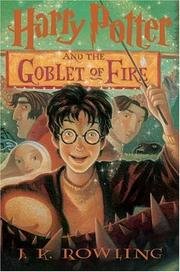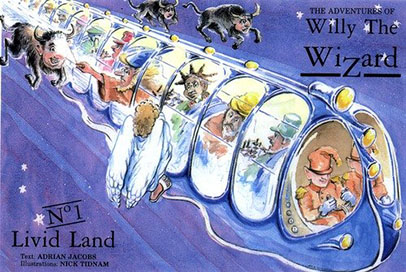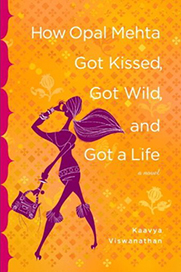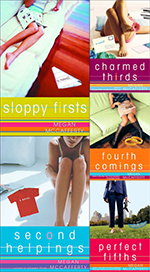

Plagiarism is a complex issue that is not easily understood. It is often taught by referring to a list of “DO NOTs.” To understand plagiarism, however, you must not only know what to avoid, but also recognize why avoiding it is so important. This lesson consists of three sections that define plagiarism through the use of everyday examples, placing it in the context of the world around you.
This section explores common questions about plagiarism in order to move towards a more complete definition. In doing so, it exposes and clarifies some common myths. Below you will find a series of six yes/no questions. Do your best to answer each, then select "Submit" to see how you did by exploring a real scenario.
Now that we've explored some common questions relating to plagiarism, let's see if you can apply what you've learned. Answer the following questions.
1. Jeff is currently conducting research that is applicable to multiple courses that he's taking. He has noticed that the assignments are very similar, similar enough that he thinks he can use the same work for both. Is it plagiarism if he submits the same work for both classes?
2. Identify which of the following statements are common knowledge. If necessary, use reputable sources to check. Select all that apply.
3. Which statement gives the best advice for using generative AI tools in your assignments?
You've finished this section. When you're ready, proceed to the next.
Sometimes, high profile plagiarism cases make it into the news. Often, these instances give clues that help to define plagiarism. This section explores two such cases, allowing you to identify plagiarism in context.


Everyone knows Harry Potter, but have you ever heard of Willy the Wizard? According to a 2010 New York Times article, the estate of Adrian Jacobs sued J.K. Rowling, alleging that she plagiarized his 1987 work titled The Adventures of Willy the Wizard-No 1: Livid Land when writing Harry Potter and the Goblet of Fire. According to Hildebrand (2009), there were four charges in the case:
Let’s now consider some of the key differences between the works. Explore the table below to see how each author treated the following questionable areas: the train, the bathroom, and the contest.
J.K. Rowling:
“a gleaming scarlet engine” (Rowling, 2002, p. 163)
Adrian Jacobs:
“a ‘pullman-like’ train made of see-through platinum for chess players” (Jacobs quoted in Hickey, 2010).
J.K. Rowling:
“It was softly lit by a splendid candle-filled chandelier, and everything was made of white marble, including what looked like an empty rectangular swimming pool sunk into the middle of the floor. About a hundred golden taps stood all around the pool’s edges, each with a differently colored jewel set into its handle. There was also a diving board. Long white linen curtains hung at the windows; a large pile of fluffy white towels sat in a corner, and there was a single golden-framed painting on the wall. It featured a blonde mermaid who was fast asleep on a rock, her long hair over her face. It fluttered every time she snored” (Rowling, 2002, p. 459-60).
Adrian Jacobs:
“yellow bathroom-cum-study” (Jacobs quoted in Hickey, 2010).
J.K. Rowling:
“Mad Myrtle helps with the clues, mermaids and mermen play a pivotal role, and Harry saves his friends to gain points in the Triwizard Tournament” (Hickey, 2010).
Adrian Jacobs:
“’Kanganatives’ populate Livid Land, mining gold dust from a Kangamine, which is then conveyed to Papua Mainland by swift silent canoes paddled by young (groan) ‘Kangamaidens’. Happily, Willy wins the wizard’s test after the female prisoners, referred to as the ‘ladies,’ are freed” (Hickey, 2010).
So what do you think? Based on the available evidence, do you think that J.K. Rowling plagiarized Adrian Jacobs when creating Harry Potter and the Goblet of Fire?


Have you heard of Opal Mehta? Harvard sophomore Kaavya Viswanathan had it all—a successful book, press coverage and even talks of a movie deal. There was just one problem. A couple of weeks after the book’s publication, the Harvard Crimson reported that portions had been plagiarized from Megan McCafferty’s Jessica Darling series. How similar were they? The following table, taken from Wikipedia’s Opal Mehta page, provides excerpts of a side-by-side comparison of the two works. As you can see, Viswanathan made extensive use of McCafferty’s work.
| McCafferty's Sloppy Firsts and Second Helpings | Viswanathan's Opal Mehta |
|---|---|
| Sloppy Firsts, page 7: "Bridget is my age and lives across the street. For the first twelve years of my life, these qualifications were all I needed in a best friend. But that was before Bridget's braces came off and her boyfriend Burke got on, before Hope and I met in our seventh grade Honors classes."[29] | page 14: "Priscilla was my age and lived two blocks away. For the first fifteen years of my life, those were the only qualifications I needed in a best friend. We had bonded over our mutual fascination with the abacus in a playgroup for gifted kids. But that was before freshman year, when Priscilla's glasses came off, and the first in a long string of boyfriends got on."[29] |
| Sloppy Firsts, page 6: "Sabrina was the brainy Angel. Yet another example of how every girl had to be one or the other: Pretty or smart. Guess which one I got. You'll see where it's gotten me."[1][29] | page 39: "Moneypenny was the brainy female character. Yet another example of how every girl had to be one or the other: smart or pretty. I had long resigned myself to category one, and as long as it got me to Harvard, I was happy. Except, it hadn't gotten me to Harvard. Clearly, it was time to switch to category two."[1][29] |
| Second Helpings, page 67: "... but in a truly sadomasochistic dieting gesture, they chose to buy their Diet Cokes at Cinnabon."[1][29] | page 46: "In a truly masochistic gesture, they had decided to buy Diet Cokes from Mrs. Fields ..."[1][29] |
| Sloppy Firsts, page 23: "He's got dusty reddish dreads that a girl could never run her hands through. His eyes are always half-shut. His lips are usually curled in a semi-smile, like he's in on a big joke that's being played on you but you don't know it yet."[29] | page 48: "He had too-long shaggy brown hair that fell into his eyes, which were always half shut. His mouth was always curled into a half smile, like he knew about some big joke that was about to be played on you."[29] |
Viswanathan maintained her innocence, claiming that any similarity between the works was a result of her photographic memory. While sounding absurd, cryptomnesia, or remembering others’ ideas and believing that they’re your own, is a common cause of plagiarism (Harris, 2001). However, as Harris (2001) points out, this unconscious plagiarism most often happens with the copying of “apt phrases or ideas,” and not entire passages. It's also important to know that the unconscious copying of sources is still plagiarism and may result in disciplinary action.
So what do you think? Based on the available evidence, do you think that How Opal Mehta Got Kissed, Got Wild, and Got a Life plagiarized?
You've finished this section. When you're ready, proceed to the next.
In academia, publications are seen as a conversation among scholars. Problems are considered, theories proposed, viewpoints argued, and solutions found in the pages of scholarly books and journals. As in any conversation, it is important to keep track of who is saying what. In scholarly writing, this is done through citing sources. Citations give credit for ideas and words, acting like a textual profile picture, showing who is bringing what voice to the conversation.
Instructors require that their students cite sources for a number of reasons. First, it allows them to track a student’s learning. They can see how students are thinking—what sources a student is using and how these sources are influencing their argument. Next, it allows students to begin developing an academic voice, adding to the scholarly conversation.
For these reasons, plagiarism is no light matter. Like an imposter account on social media, the plagiarist is impersonating someone else in the scholarly conversation. This is a type of academic dishonesty. If a student is caught plagiarizing, they can face a variety of violations. They can fail the assignment or class, they can face probation, or they can be dismissed from their program of study.
EMU officially defines plagiarism in Section V of the Student Code of Community Responsibility (under the Academic Dishonesty heading) as the “presentation or use of someone else’s work or ideas as one’s own.” The policy goes on to list the following examples: “quoting a source verbatim, or paraphrasing text from a given source, without properly citing the source; turning in a research paper that was written by someone else; or in any other way passing off someone else’s work as one’s own; or failing to give credit for ideas or materials taken from someone else” (p. 3)
Let’s explore how to deal with these example areas in more detail.
Properly quoting a source verbatim, or word-for-word, can be a confusing task. There are many different citation styles that can be used, but all require an in-text citation, which acknowledges the source of the idea at the location where it's being used, and an entry in a works cited or bibliography at the end of the document. In this exercise, we're going to focus exclusively on in-text citations, particularly a common style called author-date.
In the author-date style, properly formed in-text citations will contain two elements when quoting a source verbatim:
"Tyrian purple could be produced from the secretions of three species of sea snail, each of which made a different colour: Hexaplex trunculus (bluish purple), Bolinus brandaris (reddish purple), and Stramonita haemastoma (red)" (Gorvett, 2023).
Keep in mind that variations occur in how authors and publications are acknowledged. For example, both of the following in-text citations are correct—they exhibit both elements of proper in-text citations, albeit in different ways. Consult your preferred style manual, the University Writing Center, or an EMU librarian for additional information on acceptable constructions for in-text citations.
Now it's your turn to see if you can identify proper in-text citations. Consider this in-text citation when answering the following questions:
"The dumbing down of America is most evident in the slow decay of substantive content in the enormously influential media, the 30 second sound bites (now down to 10 seconds or less), lowest common denominator programming, credulous presentations on pseudoscience and superstition, but especially a kind of celebration of ignorance" (Sagan)
Does the in-text citation contain all of the necessary elements to properly cite its source?
We'll now consider how to paraphrase sources. Here, the goal is to incorporate an author's idea into our own words. Since we are not using the author's exact words, we don't have to use quotation marks. However, we still have to include an in-text citation that acknowledges the author and the original publication as the source of the idea. Consider the table below for an example, which compares Bob's use of a passage from An Edible History of Humanity by Tom Standage:
| Author: | Usage: | Verdict: |
|---|---|---|
| T. Standage | Europeans had first learned of potatoes in the 1530s, when the Spanish conquistadores embarked upon the conquest of the Inca Empire, which stretched right down the west coast of the South American continent. Potatoes were a mainstay of the Inca diet, alongside maize and beans. | Original passage—from Standage, T. (2009). An edible history of humanity (1st U.S. ed). Walker & Co. |
| Bob | The potato is a food that, although associated today with Irish cuisine, was brought to Europe from the New World. Cultivated by the Incas of South America, this dietary staple was not discovered by Europeans until the Spaniards arrived on the continent in the 1530s (Standage, 2009, p. 118) | Correct—Bob has acknowledged the original source of information and successfully incorporated its main points into his own argument. |
Paraphrasing is a tricky skill that takes practice to master. There are a number of tips that can be employed toward success. The following are adapted from Harvard University's Graduate School of Education's Writing Center & Communications Lab.
Now it's your turn to practice paraphrasing skills. Consider this passage when answering the following questions:
"So where is big data useful? As mentioned earlier, it is most useful in situations that are stable, where data are reliable, and where theory can guide search. Examples of these situations are astronomy and the analysis of past data, as in health records—unless the algorithms are gamed. Big data is less promising in situations that may change unexpectedly and where one is looking for the needle in a huge haystack of data. Examples of these situations are predicting spread of the flu, currency exchange rates, children at risk, or human behavior in general" (Gigerenzer, 2022, p. 109).
What are the main points of the passage? Select all that apply.
This may seem like common sense, but you cannot turn in prewritten papers as your own work. This includes not only content generated by online paper mills that sell research papers on various topics, but can also include content generated by generative AI tools such as ChatGPT as well as materials written by friends or classmates, regardless of whether or not you have their permission.
Additionally, remember that you must give credit to the author(s) of all resources that you did not personally create. This includes figures, graphs, images and tables.
What elements should all in-text citations include when quoting a source verbatim? Select all that apply.
What elements should all in-text citations include when paraphrasing a source? Select all that apply.
True or false: you can use tables and graphs found via the library's online databases without citing them since the library is paying subscription fees.
True or false: if your roommate gives you permission to turn in their paper from last year, you can use it without worrying about plagiarism.
Which in-text citation listed below is most appropriate for the following sentence, found inside a Smithsonian Magazine blog article written by J. Stromberg in 2013?
Some researchers have started looking at the reasons why a minority of people seem to rarely attract mosquitoes in the hopes of creating the next generation of insect repellants. Using chromatography to isolate the particular chemicals these people emit, scientists at the UK’s Rothamsted Research lab have found that these natural repellers tend to excrete a handful of substances that mosquitoes don’t seem to find appealing
You've finished this section. When you're ready, proceed to the next.
Bill Marino
Professor, Online Learning Librarian
Eastern Michigan University
[email protected]
(734) 487-2514
April 2024
